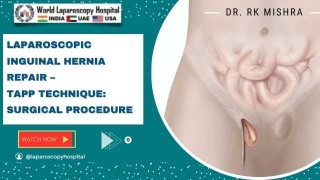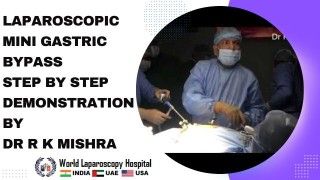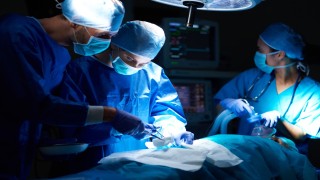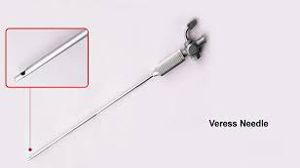Mastering Laparoscopic Technique: Recurrent Incisional Hernia Repair by Laparoscopy Simplified
Add to
Share
1,812 views
Report
2 years ago
Description
Title: Mastering Laparoscopic Technique: Recurrent Incisional Hernia Repair by Laparoscopy Simplified Introduction: Laparoscopic repair of recurrent incisional hernias represents a significant advancement in minimally invasive surgery. This article aims to elucidate the techniques and benefits of laparoscopic repair for recurrent incisional hernias, providing insights for both surgical professionals and those interested in the field. Understanding Incisional Hernias: Incisional hernias occur at the site of a previous surgical incision. They are a common complication, arising due to the weakening of the abdominal wall post-surgery. Recurrent incisional hernias, where the hernia reappears after an initial repair, pose a particular challenge due to scar tissue and altered anatomy. Laparoscopic Approach – A Paradigm Shift: Traditionally, open surgery was the standard approach for hernia repairs. However, the advent of laparoscopic techniques has revolutionized this field. Laparoscopy offers a minimally invasive alternative, involving small incisions and the use of a laparoscope (a thin tube with a camera and light) to guide the procedure. Technique Overview: Preoperative Preparation: Patient evaluation includes a thorough medical history, physical examination, and imaging studies like CT scans to assess the hernia. Anesthesia: General anesthesia is administered for patient comfort and safety. Access and Port Placement: Small incisions are made to insert the laparoscope and surgical instruments. The number and position of ports vary based on the hernia's location and size. Adhesiolysis: This step involves separating the adhesions (scar tissue) from the previous surgeries to access the hernia defect. Defect Closure and Mesh Placement: The hernia defect is closed, often using sutures. A synthetic mesh is then placed over the defect to reinforce the abdominal wall. Securing the Mesh: The mesh is secured in place using tacks, sutures, or adhesive to prevent migration. Closure: The ports are removed, and incisions are closed, typically with absorbable sutures. Advantages of Laparoscopic Repair: Reduced Postoperative Pain: Smaller incisions lead to less postoperative discomfort. Quicker Recovery: Patients generally have a faster return to normal activities. Lower Recurrence Rates: The use of mesh and minimal tissue disruption contribute to lower recurrence rates. Cosmetic Benefit: Smaller incisions result in less noticeable scarring. Challenges and Considerations: Learning Curve: Mastery of laparoscopic techniques requires significant training and skill. Patient Selection: Not all patients are ideal candidates for laparoscopic repair, particularly those with large or complex hernias. Equipment and Cost: Laparoscopic surgery requires specialized equipment and may be more costly than traditional methods. Conclusion: Laparoscopic repair of recurrent incisional hernias is a sophisticated technique offering numerous benefits over traditional open surgery. Its adoption requires skill and experience but promises improved patient outcomes, making it a valuable tool in the surgical repertoire. As technology and techniques continue to evolve, laparoscopic repair is poised to become the standard of care for incisional hernia management.
Similar Videos






